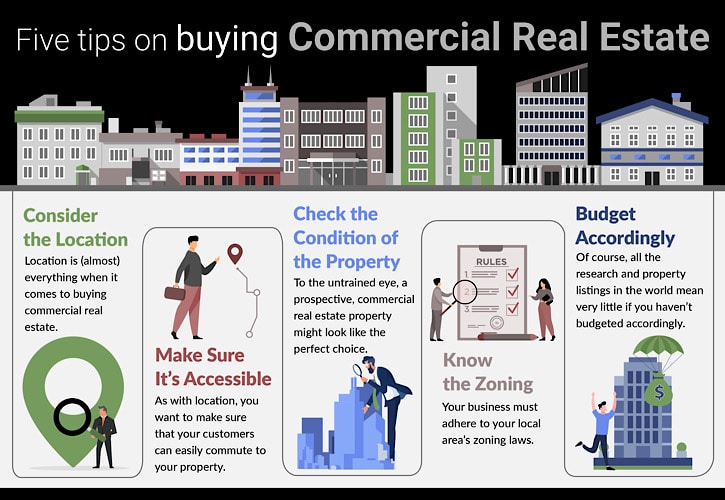Welcome to the topic “Purchasing Class A, B, or C Commercial Property: A Comprehensive Guide“
When it comes to investing in commercial real estate, one of the first decisions you’ll face is whether to invest in A, B, or C class commercial property. Understanding the differences and nuances between these property classes is essential for making informed investment decisions. In this comprehensive guide, we’ll delve into the world of commercial property classes, helping you navigate the complexities of each and providing you with valuable insights to make the right choice for your investment portfolio.
Understanding Commercial Property Classes

Commercial properties are typically categorized into three classes: A, B, and C. These classifications are based on various factors, including location, age, condition, and tenant quality. Each class has its own characteristics and risk-reward profiles, making it crucial for investors to thoroughly evaluate their options.
Class A Commercial Property
Class A commercial properties are considered the cream of the crop. They are located in prime, desirable areas, often in major metropolitan centers or affluent neighborhoods. These properties are typically newer or have undergone extensive renovations, resulting in modern and attractive facilities.
Key Features of Class A Commercial Property:
Prime Locations: Class A properties are situated in high-demand areas with excellent visibility and access.
High-Quality Tenants: They attract top-tier tenants, such as Fortune 500 companies or national retail chains, leading to stable rental income.
Excellent Condition: These properties are well-maintained and offer state-of-the-art amenities and infrastructure.
Strong Lease Terms: Lease agreements for Class A properties often come with long-term commitments and higher rental rates.
While Class A properties offer the potential for significant rental income and long-term stability, they also come with a higher initial investment cost. Additionally, they may be more susceptible to economic downturns due to their dependence on premium tenants.
Class B Commercial Property
Class B commercial properties are a middle ground between Class A and Class C. They are generally older than Class A properties and may require some updates or maintenance. These properties are often located in established neighborhoods or areas that are slightly less prestigious than Class A locations.
Key Features of Class B Commercial Property:
Good Locations: Class B properties are located in stable neighborhoods with decent traffic and access.
Diverse Tenant Base: They attract a range of tenants, from small to mid-sized businesses.
Moderate Condition: These properties may need some renovations or updates but are generally in reasonable shape.
Flexible Lease Terms: Lease agreements for Class B properties can vary, offering a bit more flexibility than Class A properties.
Investing in Class B commercial properties can provide a balance between income potential and upfront investment costs. However, they may also come with some level of risk, as they are not as secure as Class A properties and may require ongoing maintenance.
Class C Commercial Property
Class C commercial properties are the most affordable option among the three classes, but they also come with the highest level of risk. These properties are typically older, located in less desirable areas, and may require significant renovations or upgrades to attract tenants.
Key Features of Class C Commercial Property:
Challenging Locations: Class C properties are often found in areas with lower demand and visibility.
Varied Tenant Base: They tend to attract smaller, local businesses or startups.
Needs Renovation: Class C properties usually require substantial renovation work to make them marketable.
Shorter Lease Terms: Lease agreements for Class C properties may be shorter, leading to more frequent tenant turnover.
Investors who are willing to take on higher risk may find opportunities in Class C properties. These properties often require a larger initial investment to bring them up to market standards, and they may experience higher vacancy rates and lower rental income compared to Class A or B properties.

Factors to Consider When Choosing a Commercial Property Class
Now that we’ve explored the characteristics of each commercial property class, let’s delve into the factors you should consider when deciding which class is the best fit for your investment strategy.
1. Investment Goals
Your investment objectives should be at the forefront of your decision-making process. Are you looking for stable, long-term income, or are you more interested in potential appreciation and value-add opportunities? Class A properties are generally better suited for income stability, while Class B and C properties may offer more significant upside potential.
2. Risk Tolerance
Consider your risk tolerance carefully. Class A properties are less risky but offer lower returns compared to Class B and C properties. If you’re willing to take on more risk for potentially higher rewards, Class B or C properties might be a better fit.
3. Budget
Your budget will play a crucial role in your decision. Class A properties typically require a larger upfront investment, while Class B and C properties may be more accessible to investors with limited capital. Be sure to factor in renovation or improvement costs if you’re considering Class B or C properties.
4. Location
Location is paramount in real estate. Determine whether you prefer to invest in prime urban areas (Class A), stable neighborhoods (Class B), or more affordable, emerging markets (Class C). The location will greatly impact the property’s potential for appreciation and rental income.
5. Time Horizon
Consider your investment time horizon. Class A properties tend to provide stable, long-term income, while Class B and C properties may require more time and effort to realize their full potential. Your investment strategy should align with your desired holding period.
6. Market Conditions
Keep an eye on the local and national real estate market conditions. Market trends can influence the performance of different property classes. What may be a favorable market for Class A properties today may shift in favor of Class B or C properties tomorrow.
7. Financing Options
Explore financing options available for each property class. Lenders may have different requirements and terms for each class. Be prepared to secure financing that aligns with your chosen property class and investment strategy.
The Due Diligence Process
Regardless of which commercial property class you choose, conducting thorough due diligence is essential to minimize risks and maximize your chances of a successful investment. Here are the key steps to consider during your due diligence process:
1. Property Inspection
Engage a qualified inspector to thoroughly evaluate the property’s condition. For Class B and C properties, this step is especially crucial, as they may require significant repairs or renovations.
2. Financial Analysis
Review the property’s financials, including income and expenses. Ensure that the current rental income justifies the investment and that there are no hidden liabilities.
3. Tenant Analysis
Examine the current tenant roster, lease terms, and tenant quality. Tenant stability is a critical factor in your potential rental income.
4. Market Analysis

Understand the local market dynamics and trends. Analyze supply and demand, vacancy rates, and rental rates for the property class you’re interested in.
5. Legal and Zoning Compliance
Check for any legal issues, zoning restrictions, or environmental concerns related to the property. These issues can impact your ability to operate and renovate the property.
6. Financing Options
Secure financing that aligns with your chosen property class and investment strategy. Different lenders may have varying requirements for each class.
7. Exit Strategy
Have a clear exit strategy in mind. Whether you plan to hold the property long-term, sell it for a profit, or engage in value-add strategies, a well-defined exit plan is essential.
Conclusion
Investing in commercial real estate can be a rewarding endeavor, but it’s crucial to understand the nuances of different property classes before making a decision. Whether you opt for Class A, B, or C commercial property, each class offers its unique set of advantages and challenges. Your investment goals, risk tolerance, budget, and market conditions will ultimately guide your choice.
Remember that thorough due diligence is the key to success in commercial real estate. Engage with experienced professionals, including real estate agents, inspectors, and financial advisors, to ensure that you make informed decisions. By carefully considering your options and conducting thorough research, you can position yourself for success in the world of commercial property classes.
In conclusion, the world of commercial property classes is diverse and multifaceted, offering opportunities for investors with varying objectives and risk appetites. Choose wisely, conduct thorough due diligence, and be prepared to adapt to changing market conditions to build a successful commercial real estate portfolio.
TAGS